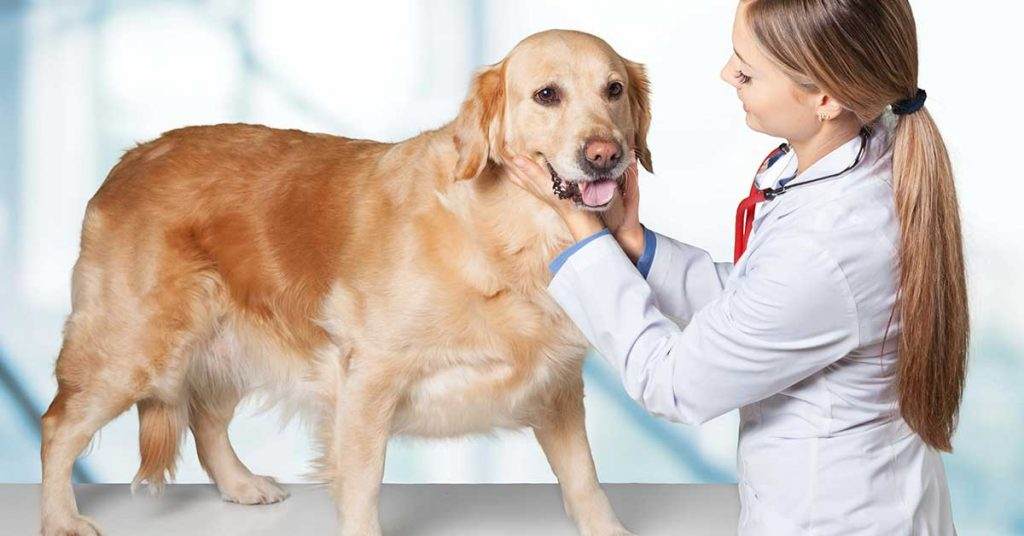Having a dog as a pet is like having a baby. It can do anything at any time and just like a parent the dog owner has to remain prepared for everything. Chewing and eating non-edible things is a common bad habit that every dog occasionally does. These non-edible things can cause a digestive problem to the dog. In such cases, induced vomiting is the best way of treatment. Hydrogen Peroxide is one chemical, which can help the dog owner in such a situation. This chemical is very inexpensive and readily available in the market. It can also be used for different purposes.
What is Hydrogen Peroxide?
Hydrogen Peroxide is a chemical solution made up of hydrogen and oxygen. This solution contains two hydrogen and two oxygen molecules. From the scientific point of view, it is a type of dibasic acid. This solution has high corrosive properties and oxidizes things quickly. In the market, it is available in different names including peroxide, hydrogen peroxide, hydrogen superoxide, and superoxide.
The high oxidization rate of Hydrogen Peroxide kills microbial life instantly. Therefore, it is often used for cleaning and disinfection purposes. This chemical gives good results against Yeast and other fungal infections. Dogs and other pets are very reactive to it. Therefore, it is often used for induced vomiting.
How to Make a Dog Throw Up by Using Hydrogen Peroxide
Just like humans, dogs are also very curious about new things. They often check things with their mouth. In this process, they often eat things that are not digestible. Shoe, socks, and other common household items are one of these things. The non-digestible properties of these items can make a dog sick. In this situation, the best course of action is induced vomiting. For this purpose, Hydrogen Peroxide is one of the best chemical solutions a dog owner can use. Here is how to apply Hydrogen Peroxide for induced vomiting.
- At first, have a 3-percent diluted hydrogen peroxide solution. A solution with a higher concentration can be toxic to the dog. It can even burn the internal organs of the dog. Therefore, avoid any hydrogen peroxide solution which is above 3% concentration. Similarly, hydrogen peroxide with a lower concentration won’t be effective.
- The next step will be calculating how much hydrogen peroxide needed to be used. The proportion of hydrogen peroxide depends on the size of the dog. For a small dog, use one tablespoon of hydrogen peroxide. For a medium-size dog use two and for a large dog use three tablespoons of hydrogen peroxide.
- The dog owner needed to be extra careful at the time of administering. Take the hydrogen peroxide solution in a feeding syringe. Then open the dog’s mouth and squirt it inside. Make sure the solution goes into the dog’s stomach. At the time of administering, make sure the dog doesn’t inhale the solution. It can cause the dog severe breathing difficulty.
- After administering the solution, wait for 15 to 20 minutes. Most dogs do vomiting within this time frame. If the dog doesn’t do vomiting, then the owner can administer a second dosage. In any case, do not apply more than two dosages. Over dosage of Hydrogen Peroxide can cause severe side effects to the dog.
- Analyze the vomit to make sure the object has come out or not. Most of the time large chunks of the indigestible objects come out with the vomit. The success rate of a Hydrogen Peroxide solution is high when applied within two hours of eating. Therefore, it is better to administer when the dog is in full stomach.
- Most dogs show signs of weakness after applying the Hydrogen Peroxide solution. There is no need to worry because it is temporary. Let the dog rest for a day and it will regain its strength. After vomiting let the dog drink lots of water and easily digestible food. Water will cleanse its stomach and maintain proper hydration levels in the dog.
When not to Give the Dog a Hydrogen Peroxide Solution
Hydrogen Peroxide is not the solution to all problems. Before administering it, the dog owner needs to check various conditions of the dog. Here are some occasions, when applying a Hydrogen Peroxide solution can give counterproductive results.
- Already vomiting
Do not Hydrogen Peroxide solution, if the dog is already vomiting. The dog owner needs to understand that the Hydrogen Peroxide solution is not a medicine. It does not make the dog better. Therefore, only use it in an emergency. It can make the situation worst if it is used on a dog that is already vomiting.
- Severely lethargic
Before applying it to the dog, check its physical condition. Do not apply it to a physically weak dog. The Hydrogen Peroxide solution will make the dog weaker and it might worsen the situation. If possible, before administering the solution ask a veterinarian to evaluate the condition of the dog.
- Comatose
Hydrogen Peroxide solution only works on consciously active dogs. The solution won’t give any result if the dog went into a coma. The dog won’t be able to throughout the solution from its stomach and the solution will damage its internal organs. For this reason, never administer Hydrogen Peroxide to a comatose dog.
- Difficulty breathing
Hydrogen Peroxide solution might arouse the dog’s lungs. It might enhance asthma-like symptoms. Therefore, any dog that has breathing difficulty should not have this solution. The solution will only encourage more breathing difficulties in the dog. For such dogs, the owner needs to discuss its situation with a veterinarian first.
- Seizures
Dogs with seizure history should not have a Hydrogen Peroxide solution. As a chemical Hydrogen Peroxide solution can induce brain cells and encourage seizure. Improper usage of this solution can also cause a brain haemorrhage. This haemorrhage can also cause coma and other brain-related hazards for the dog.
- Abdominal surgery
A dog with recent abdominal surgery should not have a Hydrogen Peroxide solution. The solution might cause further injury to the dog’s stomach. It will diminish the healing process and cause further pain in the stomach. Therefore, consult a veterinarian first before administering this solution to the dog.
- Sharp objects
Do not administer a Hydrogen Peroxide solution if it comes to notice that the dog has swollen a sharp object. If the dog tries to vomit such objects then it might scrape or cut the dog internally. In the future, these cuts can get infected and cause severe problems for the dog. In such a situation, take advice from a veterinarian.
Hydrogen Peroxide Solution for Fungal Infection
A dog that wonders around in wild often catches the fungal infection. Most of these infections happen in the dog’s paw. These infections cause severe itching and pain sensation. The only treatment for these types of infection is fungal removal. The hydrogen peroxide solution is a strong oxidizing agent. This solution easily kills any fungicide. With the help of this solution, the dog owner can easily treat the dog.
At first, clean the dog’s paw with hot water and remove all dirt and debris out. Then dry the area with a towel. Then take 3% concentrated Hydrogen Peroxide solution and apply to the area of infection. Then let it dry for a minute. Apply this solution three times a day. It is a proven clinical method of fungal infection treatment.
Hydrogen Peroxide for Dog Ear Cleaning
Most dogs ears contain long hair. These hairs protect the dog’s ear from outside debris. However, these long hairs can accumulate ear wax easily. The dog owner needs to clean this ear wax regularly. Otherwise, it will become a breeding ground for germs. In the future, these germs will cause a severe ear infection.
The hydrogen peroxide solution is a good cleaning agent for a dog’s ear. However, never use this solution raw or in high concentration. Improper use of Hydrogen peroxide solution can also damage soft tissues in the ear. Before using it always dilute the solution in water. Always apply the solution with an ear-bud. After using, clean the area with dry cotton.
Using Hydrogen Peroxide for Dog Wounds
Even though Hydrogen peroxide is often used for fungal infection treatment, but it is never used for open wounds. Hydrogen peroxide is a type of dibasic acid. Therefore, it kills any living cells. In scientific research, scientists have found that Hydrogen peroxide destroys fibroblasts cells. These cells close up the wound and fix the damage. It is not suitable for open wounds. Another problem with Hydrogen peroxide is its fast oxidizing rate. Hydrogen peroxide with high concentration burns the skin and small tissues. It triggers lots of burning sensation in the wounded area. For this reason, doctors and veterinarians suggest not to apply Hydrogen peroxide for open wounds.
Other Uses of Hydrogen Peroxide
Hydrogen peroxide is not only used for dog’s treatment, but it has many other uses. This household item can help the dog owner with many other uses too. Here are some common uses of Hydrogen peroxide for pet owners.
- Cleaning
Whether a pet owner likes it or not a dog always makes lots of mess. If it lives indoor, then it can defecate and urinate inside the house. For the dog and family members, it can become a hygiene challenge. Hydrogen peroxide can be very helpful in this situation.
- Odour remover
Sometimes the smell of dog urine and tart become unbearable. It is a common problem for dogs that live in captivity. Even though Hydrogen peroxide doesn’t contain any scent, but it can remove stinky odour easily. Just spray the Hydrogen peroxide solution on the smelly area and all stinky odours will be gone.
- Stain remover
The urine of dogs contains a high level of ammonia. Therefore, it leaves a mark on the fabric. It can easily stain the carpet, bed, and sofa. Removing these stains is very easy with a Hydrogen peroxide solution. Just put some Hydrogen peroxide solution on the stained area and wipe it with a wet cloth.
Conclusion
Hydrogen peroxide is an inexpensive and common household item. In an emergency, the Hydrogen peroxide solution can save the life of a dog. It can be used for induced vomiting and fungal infection cure. Many dog owners also use for grooming. It easily cleans earwax from the dog’s ear. However, the Hydrogen peroxide solution is very strong. It needed to be used with the right concentration, for dog’s care try to use it with around 3 % concentration. For cleaning purposes, dilute the solution with water. A Hydrogen peroxide solution above 3% concentration can be dangerous. It can easily burn the soft tissues. At the time of administering always be careful. Even the mist of this solution can cause the dog breathing problem.
Table of Contents




